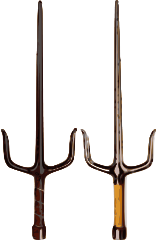A change is in the air – from Shotokan to Koryu Uchinadi Kenpo Jutsu
At the end of training this week, we finished about 15 minutes early and were asked to grab a chair and sit in a circle with Sensei and Dai-Sensei. As it sounded pretty serious, my first fear was that I had somehow broken yet another karate club. Turns out that while it was still a serious conversation we all had, it wasn’t about the end of the karate club. Rather, it was arguably a case of sowing seeds for the future.
When Sensei had us sit down for a chat, it was to announce that the club will no longer be teaching shotokan karate, but instead will be moving to teaching Koryu Uchinadi Kenpo Jutsu in its place. I’ve discussed Koryu Uchinadi Kenpo Justu before, owing to Sensei’s interest in the system and having attended some excellent seminars that Renshi Jason Griffiths has hosted in the past, so I’m not surprised that he has been working hard in the background to get his teaching certification and permission from Hanshi McCarthy to begin teaching Koryu Uchinadi Kenpo Jutsu. For him, having practiced shotokan for 22 years, found that while he loved the style, there were gaps that he felt were missing from making it an outwardly “complete” system. Having trained in hapkido, jujutsu, kobudo and kenpo in addition to his years studying karate, I can respect and understand his belief in this move, and his conviction moving forward with this decision, having discussed it with Dai-Sensei and some of our senior students as well, before presenting us with the news.
For me, the eye-opening thing was that Sensei has the conviction to put aside 22 years of shotokan training to move forward with this system – for me, I see that as a sign that there is real merit with the shift to Koyru Uchinadi. What is even more eye-opening is that Dai-Sensei, who has been a shotokan karateka for 35 years, has decided to put his black belt aside and join the rest of us in line to start afresh with Koryu Uchinadi.
My first reaction at the change was one of shock – I mean, I really enjoy shotokan, even though it traditionally had some big gaps as a system unless you knew how to dissect technique from kata (which I’ve found to really enjoy). However, having had the opportunity to train in Koryu Uchinadi, and having seen the extent of the syllabus, I’m very excited at the prospect of moving forward and broadening my experience with this system. I don’t even mind rebooting back to a lower grade – it’s a different style, and just as I went back to 10th kyu when I started learning pure shotokan vs the hybrid style I used to learn, I think it’s appropriate to go back to the start with a new syllabus. It’s not as though the past 6 years of training have been for naught either, as experience is experience, and having studied a couple of styles now, it will be easy to translate that experience in embracing this new style.
I think for those in the class that haven’t had the opportunity to experience some of the Koryu Uchinadi syllabus, the move is probably a bit more daunting – for me, having had the chance to train with Renshi on a few occasions, I have no qualms moving forward. It’s not like we’re moving to some dodgy “discount variety warehouse” style (Rex Kwon Do, anyone? :D), Koryu Uchinadi is an extensive, well-researched and globally organised style that offers an alternative view of traditional karate as most of us understand it today dervied from extensive practice and research on traditional Okinawan systems of self-defense. I also like how it offers an academic side as well, given its integration with the International Ryukyu Karate-jutsu Research Society founded by Hanshi McCarthy, and that the syllabus has been drawn from such a strong dedication to research into pre-modern karate.
I’m in no way suggesting I’ve discovered the “golden egg” with Koryu Uchinadi, but I’ve been very impressed with what I’ve seen/practiced and am looking forward to studying it as my main style of martial arts. I feel I will still get all of my base techniques/tools out of it, just as I have with shotokan, but with the broader syllabus that incorporates more close-quarters techniques, grappling, groundwork, throws, etc, I feel it will help close some substantial gaps in my ability as a martial artist, as well as emphasise the theory/research side which I also really enjoy when studying a Japanese martial art. I have also noticed that the style also contains a strong kobudo element, which means there will be an opportunity to learn traditional Okinawan kobudo within the broader framework offered by the style.
So yes, there are changes afoot, and I will miss some aspects of learning shotokan. However, I strongly believe this represent a great opportunity to study a very extensive style with extremely strong ties to traditional Okinawan martial arts, which has always been why karate in general has been of great interest to me. Once classes change over, I’ll have to go back and update the About page with some information on the styles I’ve trained in and include the shift to exploring Koryu Uchinadi Kenpo Jutsu. For those who aren’t familiar with it, check out the entry on Wikipedia for a quick summary, and there’s also the official website with stacks of information.
I guess for those who haven’t trained in the style or want to know more about it, I’m hoping the posts detailing my experiences will help others understand aspects of the system from the perspective of a newbie with a degree of existing knowledge of karate, as well as allow myself to use this blog as a platform for working through my experiences learning Koryu Uchinadi. I’m looking forward to getting into training and will start posting up my experiences of it as early as next week hopefully, assuming I don’t get distracted and forget to post about it 😉

 Image sourced from Wikimedia Commons, original image by chris
Image sourced from Wikimedia Commons, original image by chris 


